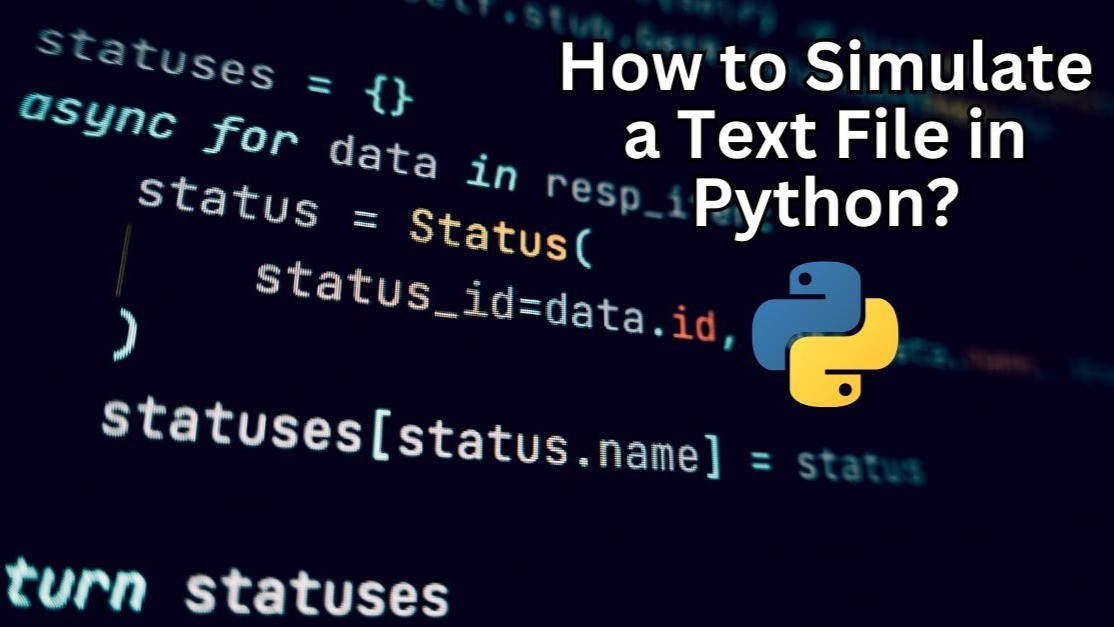
How to Simulate a Text File in Python?
Ayushman Khare
IT Staff Augmentation ( React, Vue.JS, JAVA, Phyton, PHP, Laravel, Angular, .NET, Blockchain, iOS, Android, etc.)
If you are looking to hire Python developers to work on file operations for projects as complex, it could be very useful when you learn how text files can be simulated in python. Today we will get to know how you can mock-up a text file without actually (physically) creating the same in Python — using some of its defined libraries which are often very useful during testing and other data processing tasks!
Why do we need to simulate a Text File in Python?
A really good and helpful technique is simulating a text file in Python which allows opening the files application or some library will know those because of moved data, this is an amazing new tool developers can work with similar to forming real files on disk. This can come in quite handy especially with things like:
Configure Python Environment
Before getting started with the code, make sure your Python environment is properly installed. You'll need:
PrerequisitesPython Installed : Make sure that you have Python installed in your system.
Required Libraries: Install all essential libraries, such as io, if they are not available with your Python distribution.
Step by Step guide to simulating a text file in Python
In this next section, you will learn how to simulate something like a text file in Python using the StringIO module provided in the io library of Python.
Using StringIO from the io Module
The io module provides the StringIO class, which can be used to create a text file-like object located in memory.
```python
from io import StringIO
```
To create a text file in memory
You can simulate a text file by creating the StringIO object.
```python
simulated_file = StringIO()
```
Writing Data to Simulated Text File
You can write to the StringIO object like you would a regular file:
```python
simulated_file. write("This is a pretend text file. \n")
simulated_file. Whereas the standard file works in memory as shown below: (it is read and written by copying an execution context) \n")
```
Reading Data From Simulated Text file.
Reading from the StringIO object after writing data is quite straightforward:
```python
领英推荐
simulated_file. file.seek(0) ()=> Move the cursor at start
content = simulated_file. read()
print(
Operation codes with explanations:
1. Import StringIO, operation code: from io import StringIO
Explanation: Imports the required class for simulation.
2. Create Simulated File, operation code: simulated_file = StringIO()
Explanation: Initializes a text file-like object.
3. Write to File, operation code: simulated_file.write("text")
Explanation: Writes data to the simulated file.
4. Read from File, operation code: content = simulated_file.read()
Explanation"Reads the content of the simulated file.
Benefits Of Simulating A Text File in Python
There are many benefits to simulating text files, particularly when it comes to software testing and data manipulation:
Simulated Text Files Use Cases
Text files simulated is a solution in the marketplace common to various problems.:
Next in line from the list of use cases in python created earlier is :ressionusecase2: Hiring Python Developers for Advanced File Handling
But if you are looking to hire Python developers for projects which involve advanced file handling, remember the following:
Key Skills to Look For
Experience with Python I/O: Developers need to have a good hands-on understanding of the io module and how files work in python.
After that, now the curiosity arises where to find professional Python Developers?
Freelance Platforms:? Sites such as Upwork and Toptal allow you to commission work from qualified freelancers.
Development Agencies: Look out for Python development agencies.
Job Boards:? Publish job openings on platforms like Indeed or LinkedIn to bring the best in class talent.
Conclusion
You can use this technique to simulate a text file, which allows you access to some more powerful Python magic. Figuring out the best way to replace those files and process data from memory more efficiently is crucial if your tests deal with file operations of any variety (e. g., you are processing some big xml/json/csv inputs). So, when you plan to hire Python developers; their requisite skills in handling these will indeed add up the success quotient of your project.